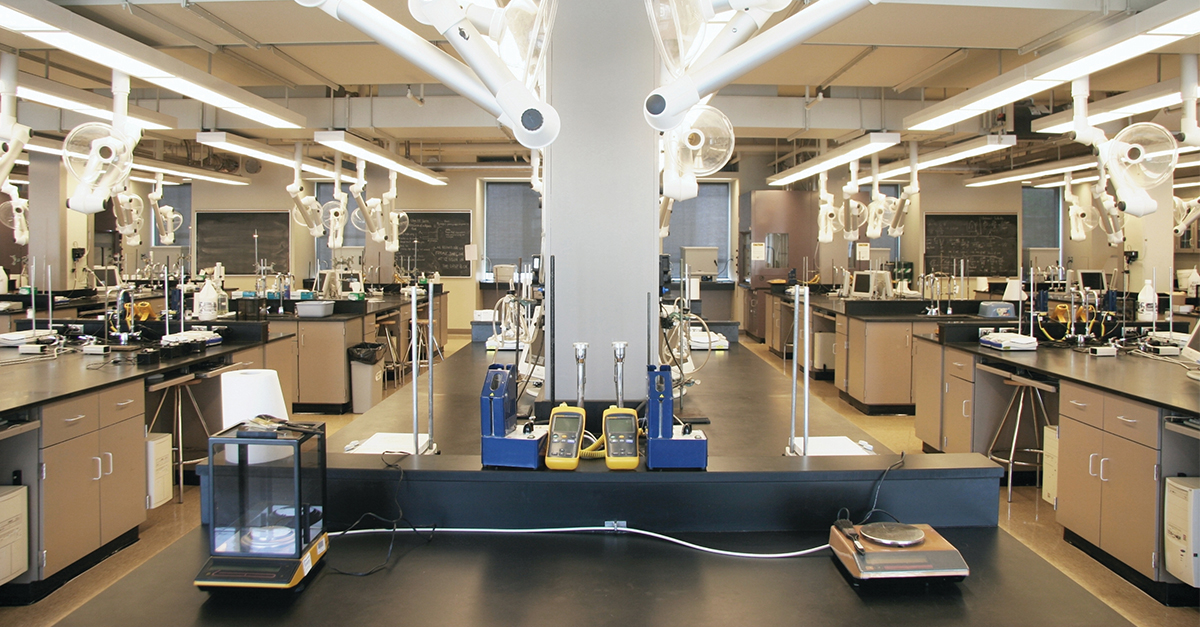From science labs to cleaning supply rooms, an educational facility houses a variety of hazardous waste that must be managed and disposed properly for safety and compliance reasons.
There are several best practices that facility managers of school buildings should incorporate into their hazardous waste management programs. In addition to following certain protocols, having a clear understanding of hazardous waste regulations is the foundation for an effective program.
Hazardous Waste Regulations: The Basics
Enacted in 1976, the Resource Conservation & Recovery Act (RCRA) states that generators of hazardous waste are responsible for their waste from the time of generation to the final destruction. Schools are considered generators of hazardous waste, and therefore, facility managers of school buildings must follow all government-mandated guidelines outlined within RCRA and any other relevant federal, state, or local regulations that dictate how to manage and dispose of it. If they do not follow regulations, schools are at risk for receiving penalties, and their actions could have a damaging effect on the environment.
Because schools are considered generators of hazardous waste, it’s imperative for facility managers and janitorial team members to correctly identify and store hazardous waste generated on site. To ensure hazardous waste is managed in a safe manner that is compliant with government-mandated regulations, schools typically hire a hazardous waste disposal services company to provide compliance training in addition to pick-up and disposal services. After the hazardous waste is picked up from the school, the service provider assumes the responsibility of the waste and transports it to a treatment facility.
What Constitutes Hazardous Waste?
In a school building, there are several commonly-found items that have hazardous properties. Once an item containing hazardous properties is no longer usable, it is regarded as hazardous waste. Per the U.S. Environmental Protection Agency, “a hazardous waste is a waste with properties that make it dangerous or capable of having a harmful effect on human health or the environment.”
Hazardous waste items possess ignitable, corrosive, reactive, and/or toxic characteristics. To determine if a product is considered a hazardous waste item, you can review its safety data sheet, manufacturer information, label, and ingredients, or refer to guidelines provided by your hazardous waste management service provider.
For additional information on what constitutes hazardous waste, visit www.epa.gov/hw. Please keep in mind: State regulations are more stringent than federal regulations, and counties and cities may also have stricter regulations that must be followed for your hazardous waste management program to remain compliant.
Hazardous Hot Spots
As one of the most common sources of hazardous waste in a school building, science lab classrooms require special attention to ensure proper management, transport, and disposal of chemicals. From cleaning ventilation hoods to removing chemicals no longer needed, hazardous waste regularly needs to be addressed in school science labs.
Hazardous Waste Categories
Hazardous waste must be properly identified and separated by the following hazardous waste categories: aerosols and flammables, toxics, corrosive acidic, corrosive alkaline (basic), oxidizer, and universal waste.
- Flammable items catch fire easily and have a flash point of less than 140 degrees Fahrenheit or 60 degrees Celsius.
- Corrosive acidic and alkaline items easily corrode materials or human tissue. Acidic materials contain a pH of less than 2, while alkaline materials have a pH of 12.5 or higher. Many cleaning items commonly used in schools have corrosive characteristics.
- Toxic items, such as rat poison, are harmful or fatal when ingested or absorbed. While not typically found in a school building setting, reactive waste can release toxic fumes when heated or mixed with water.
- Oxidizers actively support combustion, and include chemicals sometimes found in school laboratory classrooms, such as hydrogen peroxide, sodium perchlorate, and bromine.
- Universal waste items include batteries, light bulbs, and pesticides, and must be managed by the same standards as hazardous waste. There are some items considered nonhazardous by states, such as soaps, shampoo, and nonbleach detergents, that are regulated as hazardous waste and thus, must be treated as such.
Storage and Safety
There are several best practices for bagging, segregating, and storing hazardous waste that will help ensure the safety and compliance of your school’s hazardous waste management program.
Properly seal items. Prior to storing any hazardous waste items in a bin, place them individually in a sealed plastic bag to keep items from commingling and causing a reaction. Double bag any containers that are leaking and add absorbents to prevent issues.
Use separate bins. Incompatible hazardous waste items must remain separate, so it’s recommended to use separate accumulation bins that are designated for each of the following categories: aerosols and flammables, toxics, corrosive acidic, corrosive alkaline (basic), oxidizer, and universal waste.
Label containers properly. Once the initial item is place within a bin, label the container as “Hazardous Waste” and also include the accumulation start date. Should an inspector ever visit your school, proper labeling is one of the first things the inspector will examine and evaluate. States often require weekly inspections of hazardous waste accumulation containers and storage areas, but it depends on your state’s regulations concerning your school’s generator size.
Scout a safe storage area. Store accumulation bins in a dedicated, permanent, clean, and neatly organized hazardous waste area. The ideal location is away from traffic areas, electrical panels, perishable/consumable product storage, and dock doors. Also keep containment bags, spill kits, and absorbent and other relevant supplies in the secure storage area. The waste bins should be clearly visible at all times, and emergency numbers, training materials, and posters should be on display in plain sight, as well.




